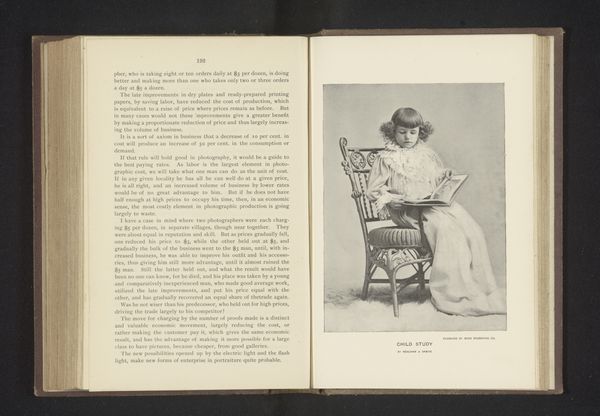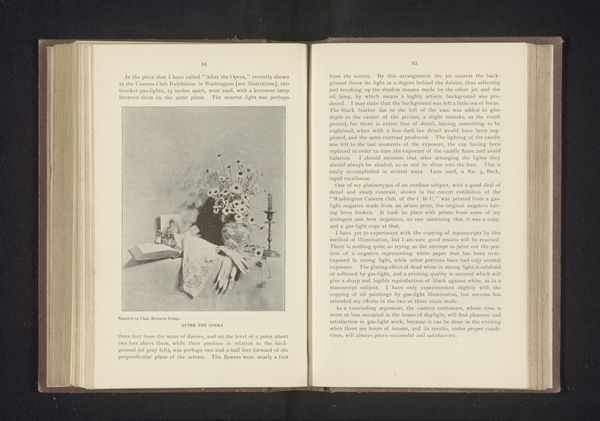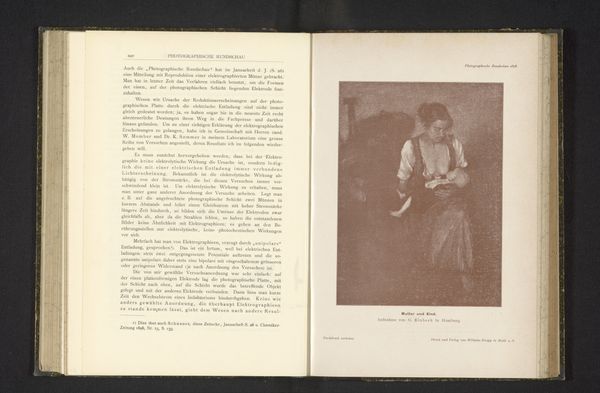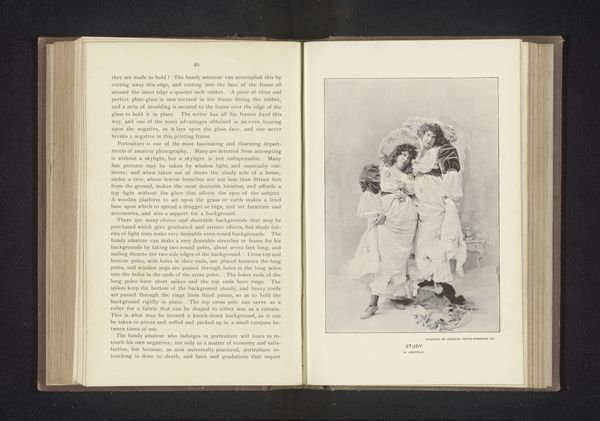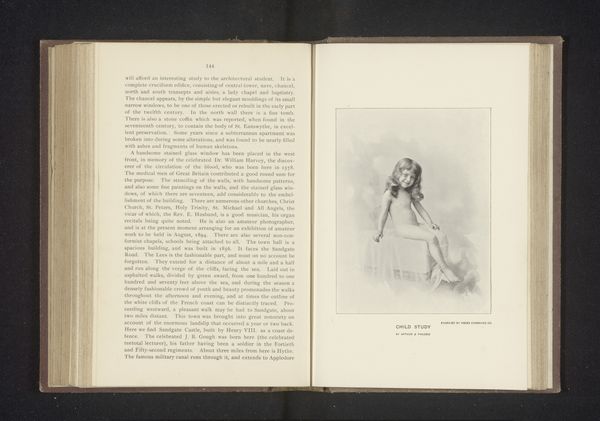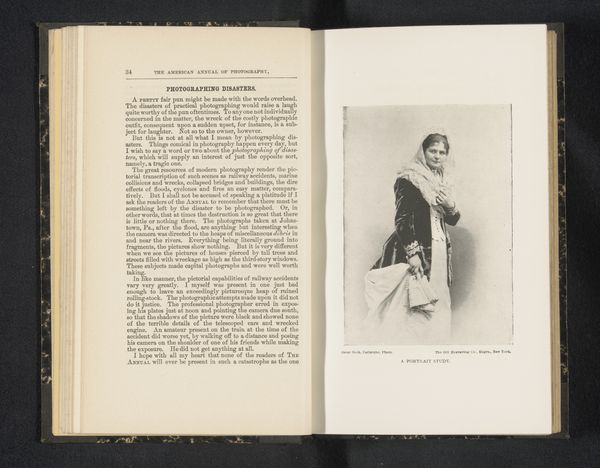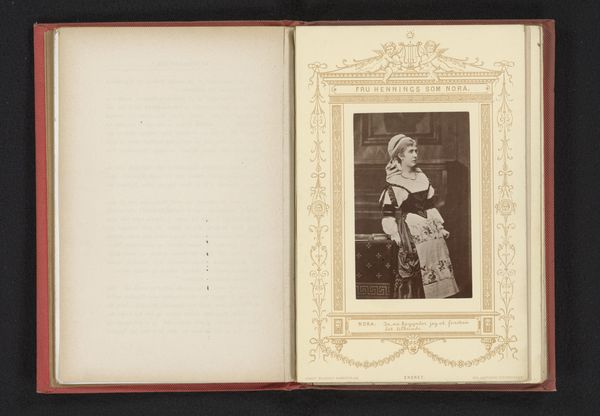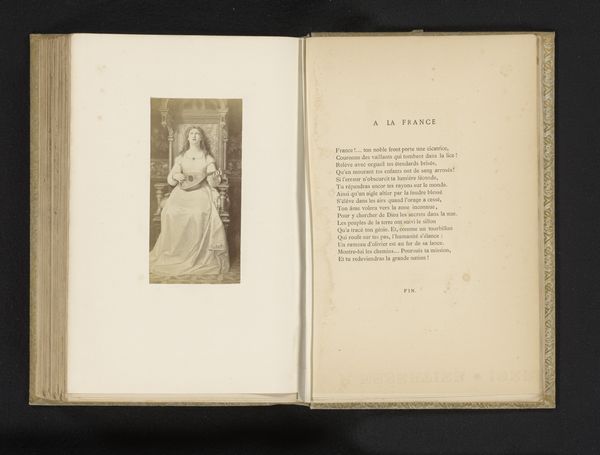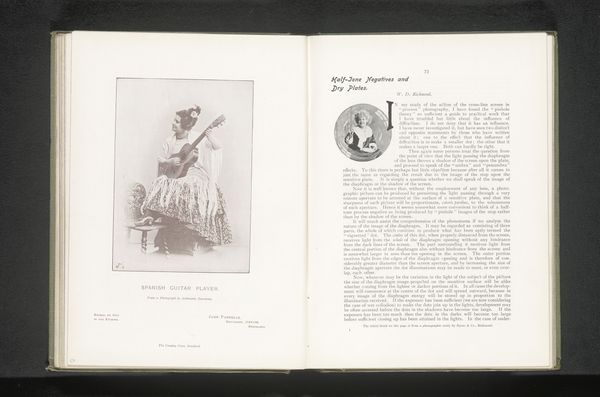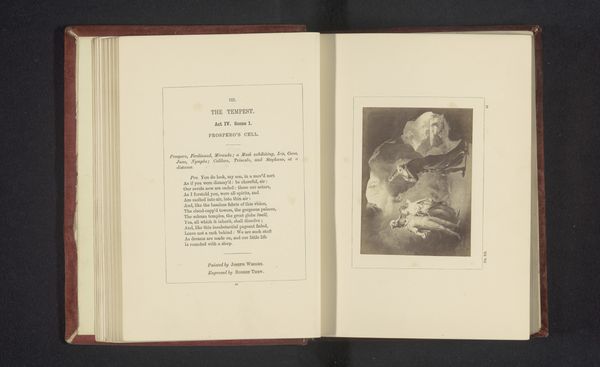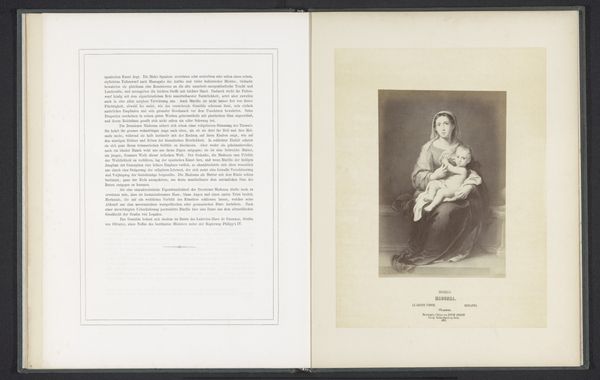
print, photography, albumen-print
#
portrait
#
still-life-photography
# print
#
photography
#
child
#
albumen-print
Dimensions: height 141 mm, width 96 mm
Copyright: Rijks Museum: Open Domain
Curator: This image before us is titled "Child Study." This albumen print comes from a photography manual on flashlights and photographic prints dating from before 1895. Editor: It's a rather melancholic scene, isn't it? The monochrome palette, combined with the child’s expression, evokes a strong feeling of subdued nostalgia. The ornate chair looks incredibly uncomfortable too. Curator: It speaks volumes about the socio-economic status of the family commissioning the print. These albumen prints required careful processes, from coating paper with egg whites to meticulous developing techniques, a sign of disposable income, if you will. Also, consider the labor in crafting such a highly decorative piece of furniture. Editor: Yes, but the photograph's composition holds my attention. The photographer positions the child centrally, emphasizing their form and the details of their attire. The light and shadow interplay across the subject creates a visual depth—I want to decode the structural choices in this staged portrait. Curator: Think about what it meant to produce photographs at the time. Lighting had to be very calculated. And the book that features this print wasn't just about documenting "likeness"; it was an instructional tool demonstrating proper practices using certain materials like collodion, albumen and silver nitrate to create certain aesthetic or stylistic preferences, something more akin to art rather than document. Editor: Indeed, it's as if the photographer aims to immortalize this transient moment of childhood. There’s an attempt to abstract a particular ideal. The form embodies both presence and fleeting innocence, something rather interesting in terms of subject-object relations. Curator: Absolutely, and if you turn to the page adjacent to the photograph, you find explanations about setting up light and ways to hold children still! This context transforms the picture from a mere family photograph to an indicator of labor relations and industrial capabilities, suggesting photographic materials and their impact on culture and identity in the Victorian era. Editor: So well observed! Ultimately, the visual tension within its carefully arranged space transforms this modest work into something very compelling. Curator: Yes, seeing the artistic approach while considering the manual context offers us a fascinating way to comprehend both the photographic process and its intended impact.
Comments
No comments
Be the first to comment and join the conversation on the ultimate creative platform.
